Self-Lubricating Bearings
Table of Contents
Definition
Self-lubricating bearings are components that have built-in lubrication systems, reducing the need for external lubricants by utilizing materials or coatings that facilitate smooth motion.
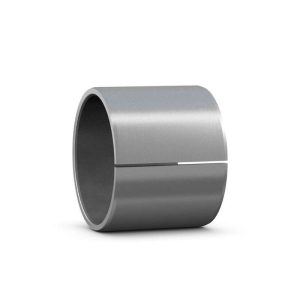
FHD Bearings is an ISO 9001:2015 certified manufacturing company stocking a full range of self-lubricating bearings. With over 1,200 different bearing sizes and over 250K bearings in stock.
Materials
Bronze
Bronze bearings are typically composed of bronze alloys with embedded solid lubricants like graphite or PTFE.
The combination of bronze’s strength and the lubricating properties of embedded solids provides effective self-lubrication, reducing friction in various applications.
PTFE (Polytetrafluoroethylene)
PTFE bearings are made from the synthetic fluoropolymer PTFE, known for its non-stick properties.
PTFE’s low-friction nature and resistance to chemicals make it an excellent material for self-lubricating bearings, ensuring smooth operation.
POM Composite
POM (Polyoxymethylene), also known as acetal or Delrin, is often used in composite bearings with reinforcing materials such as fibers or other polymers.
POM composite bearings exhibit high mechanical strength, wear resistance, and low friction. The composite structure enhances the material’s overall performance, making it suitable for applications where a combination of strength and self-lubrication is essential.
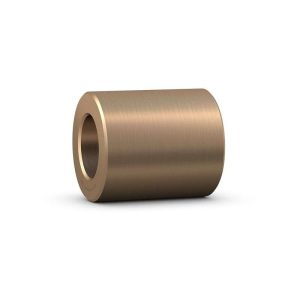
PTFE Composite
PTFE composite bearings combine the self-lubricating properties of PTFE with reinforcing materials such as glass fibers or bronze powder in a composite structure.
This composite design enhances the bearing’s load-carrying capacity and wear resistance while maintaining the low-friction characteristics of PTFE. PTFE composite bearings are suitable for applications requiring a balance of strength, lubrication, and durability.
Features
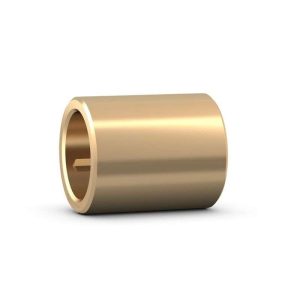
- Friction Reduction : Self-lubricating bearings inherently minimize friction, as they incorporate materials or coatings that provide lubrication without the need for external additives. This characteristic contributes to smoother operation and reduced wear.
- Low Maintenance: Self-lubricating bearings require less maintenance compared to traditional bearings, as they can operate effectively for extended periods without the frequent need for lubricant replenishment.
- Wide Temperature Range: Self-lubricating bearings can function efficiently across a broad temperature spectrum, maintaining their lubricating properties and mechanical performance in both high and low temperature conditions.
- Damping Effect: Some self-lubricating bearings contribute to damping vibrations and reducing noise during operation, enhancing the overall stability and quietness of machinery.
- Dimensional Stability: Self-lubricating bearings often maintain dimensional stability under varying conditions, ensuring consistent performance and fit within mechanical systems over time.
Advantages
- Extended Lifespan: Longer operational life due to inherent lubrication and decreased friction.
- Cost-Efficiency: Potential cost savings over time with lower maintenance needs.
- Versatile Load Handling: Excel in handling heavy loads, providing reliability in various applications.
- Corrosion Resistance: Resistant to corrosion, enhancing durability in harsh environments.
- Chemical Resilience: Withstand exposure to various chemicals, expanding application versatility.
- Quick Break-In: Rapid break-in period, achieving optimal performance sooner.
- Noise and Vibration Damping: Contribute to quieter operation and vibration reduction in machinery.
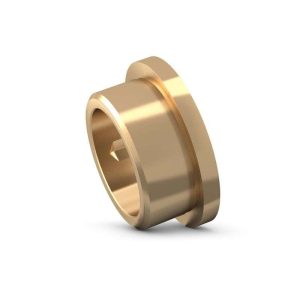
Taxonomy
Self-lubricating Bushing Bearings

Self-Lubricating PTFE Bearings
PTFE straight (cylindrical) bushings are suitable for oscillating, rotating and linear movements, and can accommodate radial loads.

Self-Lubricating Bronze Bearings
Bronze straight (cylindrical) bushings are suitable for rotating, oscillating and linear movements, and can accommodate radial loads.

Self-Lubricating POM composite Bearings
POM composite (cylindrical) bushings are suitable for oscillating, rotating and linear movements, and can accommodate radial loads.
Self-lubricating Thrust Bearings

Self-Lubricated PTFE Thrust Washer
PTFE composite thrust washers are suitable for rotating and oscillating movements, and can accommodate heavy axial loads.

Self-Lubricating Thrust Bearings
Slim Pack thrust bearings are unique in the industry. They need no lubrication, can tolerate extremely high loads and require very little space.
Applications
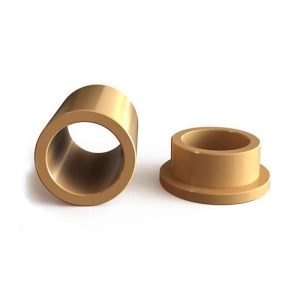
- Automotive Industry: Components such as suspension systems, steering columns, and chassis elements benefit from self-lubricating bearings, reducing friction and enhancing durability.
- Aerospace: Critical aerospace components, including landing gear assemblies and control mechanisms, leverage self-lubricating bearings to withstand extreme conditions and reduce maintenance needs.
- Marine Equipment: Bearings in marine environments, like ship propulsion systems and winches, utilize self-lubricating properties to resist corrosion and function effectively in water-exposed conditions.
- Renewable Energy: Wind turbines and solar tracking systems benefit from self-lubricating bearings, providing reliable performance in challenging outdoor conditions while minimizing maintenance needs.
- Medical Devices: Self-lubricating bearings contribute to smooth motion in medical devices such as robotic surgery systems and diagnostic equipment, crucial for low-maintenance operation.
- Electronics and Robotics: Precision robotic systems and electronic devices use self-lubricating bearings for smooth movement, reduced noise, and enhanced reliability in dynamic applications.
Key Manufacturing Process of Self-Lubricating Bearings
Material Selection
Choosing the appropriate base material for the bearing, such as bronze, PTFE, or polymer composites, based on the specific application requirements and desired properties like wear resistance and self-lubrication.
Molding or Machining
Shaping the base material into the desired bearing form through molding or machining processes. This step involves creating the initial structure and dimensions of the bearing.
Sintering or Curing
For composite bearings, a sintering or curing process may be employed to bond the different materials together. This step enhances the structural integrity of the bearing and ensures proper distribution of lubricating additives.
Impregnation
Introducing solid lubricants, such as graphite or PTFE, into the bearing material through impregnation. This step ensures that the self-lubricating properties are evenly distributed throughout the bearing structure.
Surface Treatment
Applying surface treatments or coatings to enhance the bearing’s performance, such as improving wear resistance or providing additional protection against corrosion.


FAQ - Frequently Asked Questions
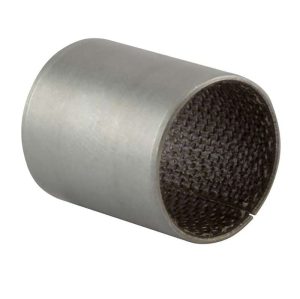
Self-lubricating bearings are components designed with materials or coatings that provide inherent lubrication, reducing the need for external lubricants in various mechanical applications.
These bearings work by incorporating materials with inherent lubricating properties, such as PTFE or graphite, which reduce friction between moving parts.
Common materials include bronze, PTFE, polymer composites, graphite, and various other combinations of metals and solid lubricants.
Advantages include reduced friction, low maintenance requirements, extended lifespan, high load capacity, corrosion resistance, and suitability for various operating conditions.
Applications include automotive systems, aerospace components, industrial machinery, marine equipment, medical devices, renewable energy systems, electronics, and construction equipment.
Yes, many self-lubricating bearings are designed to handle heavy loads, making them suitable for applications with high-force requirements.
Reduced friction in self-lubricating bearings results in energy-efficient operation by minimizing the energy lost to frictional resistance.
No, these bearings are designed to operate without the need for external lubrication, as they have built-in lubricating materials.
Self-lubricating bearings generally require less maintenance than traditional bearings, but periodic inspections for wear and proper function are recommended.
Yes, many types of self-lubricating bearings can operate effectively in a wide temperature range, including high-temperature environments.
Yes, self-lubricating bearings are often made from materials with corrosion-resistant properties, making them suitable for harsh environments.
Installation methods vary, but generally, self-lubricating bearings are press-fit into a housing or onto a shaft using standard bearing installation practices.
The break-in period is typically shorter for self-lubricating bearings compared to traditional bearings due to their inherent lubricating properties.
Yes, some self-lubricating bearings contribute to noise reduction and vibration damping during machinery operation.
Yes, certain types of self-lubricating bearings are designed to handle high-speed applications with reduced friction and wear.
Yes, manufacturers often offer customization options for self-lubricating bearings to meet specific performance and application requirements.
Yes, self-lubricating bearings are available in standard sizes, but manufacturers can also provide custom sizes to meet unique specifications.
Store bearings in a clean, dry environment and handle them with care to avoid damage. Follow manufacturer guidelines for proper storage and handling.
Yes, many self-lubricating bearings are designed to resist water and function effectively in wet conditions.
Yes, the reduced maintenance requirements and longer operational life of self-lubricating bearings often result in cost savings over the long term compared to traditional bearings.
Installation and Maintenance
Installation
- Clean the Housing and Shaft: Ensure that the housing and shaft where the bearing will be installed are clean and free of debris. You can use a cloth or brush to clean these parts.
- Inspect the Bearing: Before you install the bearing, inspect it for any signs of damage or wear. It should be in good condition prior to installation.
- Prepare the Bearing: Apply a light layer of lubricant to the bearing. Even though it’s a self-lubricating bearing, a light application of lubricant can help with the initial installation and operation.
- Align the Bearing: Carefully align the bearing with the housing and the shaft. Make sure it is properly oriented.
- Install the Bearing: Gently press the bearing into the housing. If necessary, use a bearing press or a block of wood and hammer to carefully tap it into place. Be careful not to apply too much force or you could damage the bearing.
- Secure the Bearing: Once the bearing is in place, secure it as per the manufacturer’s instructions. This might involve screws, clips, or another type of fastener.
- Check the Installation: After you’ve installed the bearing, check to make sure it is secure and rotates freely. If there are any issues, you may need to adjust the bearing or its housing.
- Reassemble the Machinery: Once the bearing is installed, you can reassemble the rest of the machinery. Make sure all parts are in their correct places and secure before starting the machinery.
Maintenance:
- Regular Inspection: Regularly inspect the bearings for any signs of wear, corrosion, or damage. This should be done at intervals recommended by the manufacturer.
- Cleanliness: Keep the environment where the bearings operate clean. Dust, debris, and dirt can affect the performance of the bearing.
- Lubrication Check: Although self-lubricating bearings do not require regular lubrication, it’s still important to check the lubrication condition periodically. Make sure there’s no excessive heat or noise, which can indicate a lubrication problem.
- Avoid Overloading: Ensure that the bearings are not overloaded beyond their rated capacity. Overloading can lead to premature failure.
- Temperature Monitoring: Keep an eye on the operating temperature of the bearing. High temperatures can indicate problems such as overloading or insufficient lubrication.
- Vibration Analysis: Regular vibration analysis can help detect issues such as misalignment, imbalance, or looseness.
- Replacement Planning: Have a plan in place for bearing replacement. Depending on their operating conditions, even self-lubricating bearings will eventually need to be replaced. Knowing the manufacturer’s recommended lifespan for the bearing and monitoring the bearing’s condition can help you plan for replacement before failure occurs.

Related Posts
The working principle and manufacturing process of self-lubricating bearings
Table of Contents Categories The working principle and manufacturing process...
Read MoreWhat Are Self-Lubricating Bearings?
Table of Contents Categories What Are Self-Lubricating Bearings? Definition Of...
Read MoreEffortless Motion: Embracing Self-Lubricating Plain Bearings
Table of Contents Categories Effortless Motion: Embracing Self-Lubricating Plain Bearings...
Read MoreRevolutionize Your Machinery: Self-Lubricating Bearings 101
Categories Revolutionize Your Machinery: Self-Lubricating Bearings 101 Table of Contents...
Read More



